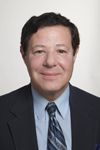Seborrheic dermatitis is one of those dermatologic conditions that is just SO common and widespread that is hard to even know precisely just how many people really suffer from it. Estimates are difficult to make since it is likely that many people with milder forms of the problem never seek medical attention. You may recognize this condition as either plain dandruff, or as “dry,” red, intensely itchy scalp, or as a mounds of greasy scales and painful, bleeding scabs. But seborrheic dermatitis may be all of those things and, to make matters still worse, can be quite socially embarrasing.
The cause of the condition is still not definitively known. Since it is frequently seen in families, a genetic succeptibility was long suspected. More recently, a well-known yeast organism that inhabits the skin of most humans called Malassezia ovale has been implicated as a possible major causative or contributive player by releasing substances that trigger the inflammation ( the “itis” in its designation) that results in the characteristic signs and symptoms. It has also been associated with certain nervous system disorders, such as Parkinson’s disease, and can flare up or be aggravated during periods of heightened emotional stress.
Seborrheic dermatitis gets its name from the fact that it occurs in the seborrheic areas of the skin-- ie. those areas, such as the scalp, face, and upper and lower trunk that contain large numbers of sebaceous glands (sebum-producing oil glands). It typically occurs in the immediate newborn period when maternal hormones are still circulating in the baby’s blood, and following puberty. However, despite this obvious association, no direct correlation has yet been proven between the quantity or chemical makeup of the oil gland secretion and the presence of the eruption.
Run-of-the-mill dandruff (“cradle cap” in infants) is basically the non-inflammatory spectrum of seborrheic dermatitis, in which only scaling and flaking are seen. In a healthy scalp, fewer than one-half million cells may be liberated per square centimeter as part of the normal production and shedding process (cellular turnover). In a scalp with seborrheic dermatitis, by contrast, that number can approach 800 thousand cells per square centimeter, or approximately forty percent more. The rate of cellular turnover is also elevated, giving rise to a greater number of immature, flakeable scalp cells. A normal scalp, for example, might have under four thousand such cells per square centimeter. But, in plain dandruff, more than eight times that number may be seen, and in full-blown seborrheic dermatitis that number can exceed twenty times the normal figure.
Scalp flaking is probably the most easily recognized variant of the condition. But in more extensive cases, seborrheic dermatitis may appear as mildly reddish skin and fine, dry scaling in the eyebrows, along the eyelid margins, sides of the nose, moustache area, behind the ears (skin cracking is very common there), below the breast, in the groin and buttock folds, and even within the belly button. Not uncommonly, especially in neglected cases, the scaly areas may merge into a larger area of yellow, greasy mounds.
All facts, figures and descriptions aside, what can be done about this nuisance problem, you may ask? While there is currently no cure for the condition, there are fortunately many excellent treatments for controlling it and for keeping it in check once controlled.
Mild cases of scalp dandruff can be treated easily by simply increasing the frequency of hair washing with a gentle antiseptic cleanser, such as Carmol Shampoo. More stubborn cases and those with more inflammation can profit from the addition from the nightly application of a non-steroid prescription containing 10% sodium sulfacetamide (Carmol Scalp Treatment lotion). If still needed, antidandruff shampoos containing zinc pyrithione (eg. Head and Shoulders); selenium sulfide (eg. Selsun Blue, or ketoconazole (an anti-yeast agent) (eg. Nizoral AF shampoo) may be added. More resistent cases may require the use of potent prescription corticosteroid foams (Luxiq) or lotions (Temovate Scalp Application).
In many cases, the lesions of seborrheic dermatitis in the non-hairy areas can be easily treated with a variety of prescription topicals in lotions, gels or foam formulations. Of course, if the lid margins are involved or if there is secondary infection, your dermatologist will need to prescribe other topical or oral therapies. So scale and scratch no more.
For a consultation or appointment, call us at (212) 772-9300.
